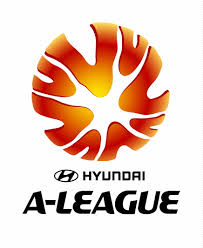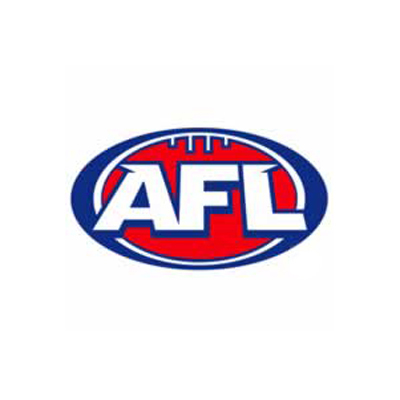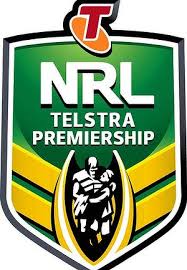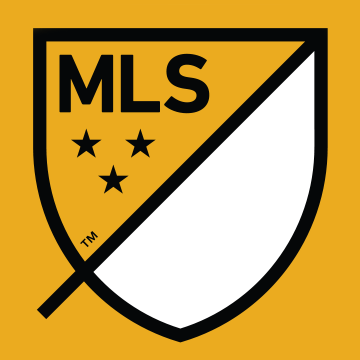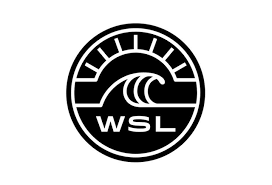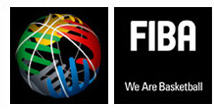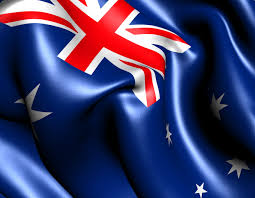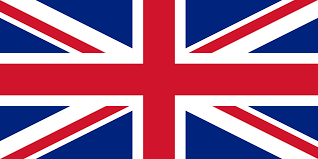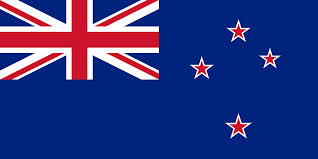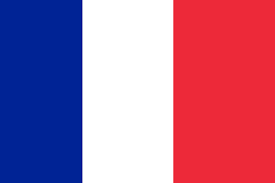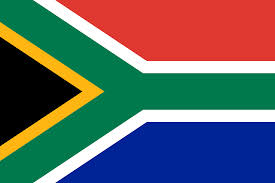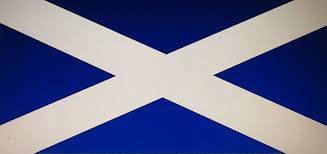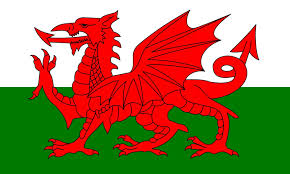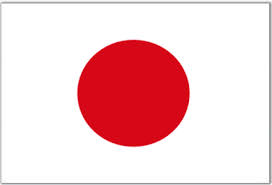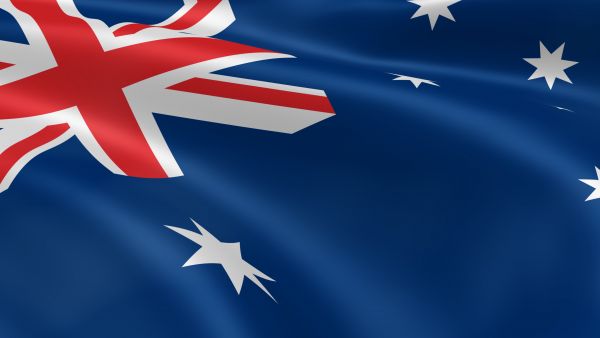International Surfing Association (Surfing)
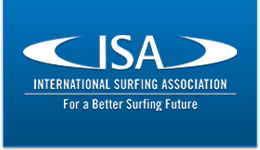
Latest News & Results
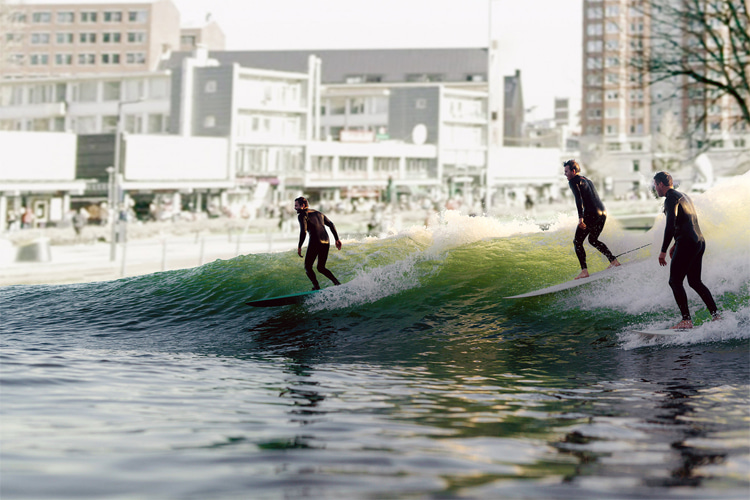
The world's first city center wave pool is ready to welcome surfers. Meet RiF010, the Dutch answer to urban surfing.
Rotterdam is home to Europe's largest seaport. It is known for its architecture, arts scene, and maritime heritage.
Despite being just 30 kilometers away from Scheveningen, probably the best surf break in the Netherlands, "Roffa," one of the city's nicknames, felt the need to optimize part of one of its several canals.
The Dutch are world-famous for their land reclamation tradition, a vital part of their history and development.
With much of the country situated below sea level, approximately 17 percent of the current land area has been reclaimed from the sea or lakes for centuries to expand their territory and create valuable agricultural land and urban areas.
The Rotterdam surfing community is now doing the same - creating waves where there was only water.
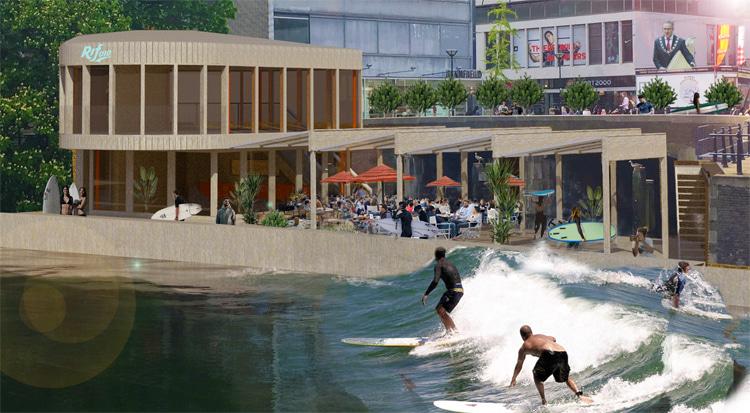
Ten Years in the Making
But turning the dream into reality was a very complex process. It took ten years for RiF010 to see the light at the end of the barrel.
Edward van Dongen and Edwin van Viegen are the two "lunatics" who dared to imagine a moving wave rolling in the Steigersgracht, one of River Rotte's canals.
Around 2014, they thought of a better way to have consistent surf in Rotterdam that could be less dependent on the North Sea's sensitive weather and swell conditions.
One of the first steps was to contact the local authorities. The town hall liked it, but some of the residents did not.
They feared a surf break in front of their homes would bring noise and confusion to the quiet neighborhood.
Despite having won €3 million in public funding from a citizen initiative program, Edward and Edwin faced legal action to put an end to their dream.
Five years later, the Dutch court gave them the green light to kick off RiF010. But then again, the pandemic hit, and the project had to be suspended.
In the meantime, the construction costs went up, and the final estimate to make surfing a reality in the heart of Rotterdam was €10 million.
At some point, the entrepreneur thought about hanging the leash and canceling the project.
Luckily, with the support of a group of local entrepreneurs and additional financing from the Dutch bank ABN Amro, RiF010's artificial wave kept rolling.
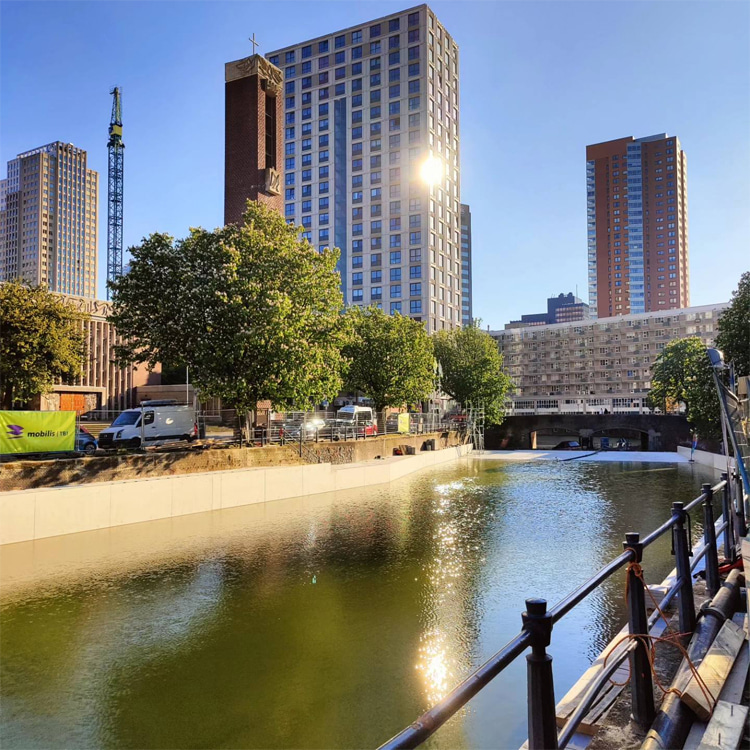
One Wave Every 7 Seconds
Rotterdam's outdoor urban wave pool is filled with water and ready to inspire a new generation of city surfers.
You will find it at Zijl, 3011 PX Rotterdam. It's a one-minute walk from the Markthal and five minutes away from the Maritime Museum.
The wave-riding lane is around 50 meters long.
RiF010 uses a pneumatic system by Surf Loch, developed in association with Delft University of Technology, that creates a wave every seven seconds.
After fine-tuning the system, developers believe they can generate 1.5-meter high waves peeling across the basin.
The venue will also feature a wooden beach house with a cafeteria and restaurant designed by Erik de Jong of Morfis Architecture and a surf shop.
The pool will be open for canoeing and diving courses on special days and surfing lessons.
Edward van Dongen and Edwin van Viegen believe RiF010 can hold around 150,000 surfers annually, but at 20 percent capacity, it becomes a viable business.
Open All Year Round
RiF010 opens on July 6, 2024, with the Rotterdam Surf Open.
A one-hour session at the Rotterdam wave pool costs €35 to €60, depending on the wave height.
It is open ten hours a day, all year round. During winter, underwater lighting keeps the surf up in the late afternoon.
Why is Rotterdam's wave pool named RiF010?
The brand derives from the Dutch word for "reef" and the local postal code "010."
Words by Luís MP | Founder of SurferToday.com
https://www.surfertoday.com/surfing/rif010-the-downtown-rotterdam-wave-pool

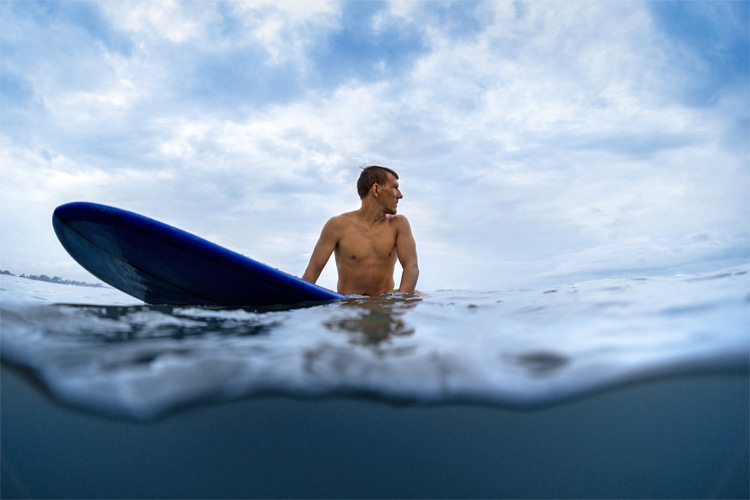
Have you ever missed a very good-looking wave after losing precious time spinning your surfboard to start paddling?
Waves don't wait for surfers. They're on a mission to crash near the shoreline, whether we ride them or not.
The time between sets is often spent talking to fellow surfboarders, observing the surroundings, contemplating the sky, or meditating.
Only a fraction of these waiting minutes is spent carefully looking at the horizon and the potentially incoming corduroy lines.
The better surfers read the ocean, the better the waves they'll catch and ride.
There's a lot of information we can extract from a swell moving 100 yards from where we sit in the lineup.
From a distance, an advanced surfer will know if it's a wave with an interesting riding potential or if they should skip it.
So, when that moving slope of seawater is about to reach surfers, they should already be in a perpendicular - or slightly angular - position and paddling toward the beach.
The trick of catching a wave is matching its speed as much as possible.
However, for that to happen, a surfer needs to start paddling earlier, i.e., a few seconds before the wave arrives in the lineup.
The thing is, it can take time to swing, turn, spin, or pivot the surfboard -whatever you want to call it.
And, due to their length, width, thickness, and extra volume, it's harder and more time-consuming to swing a longboard around 180 degrees.
In other words, shortboards are easier to swing.
Spinning a Surfboard to Catch a Wave 101
Most beginner surfers struggle transitioning from waiting to paddling for the desired wave.
One of the most common reactions is using the hands as a paddle to pivot their boards or to actually lay on the board and paddle around to turn.
Although technically doable, it's not practical and surely not the right way to do it.
The problem with swinging the surfboard while sitting on it is that your legs underwater act as an anchor, preventing the board from moving much.
Here's how to spin your surfboard fast before paddling into a wave:
- Identify the wave you wish to catch as soon as possible;
- While still sitting, shift your weight back on the board toward the tail;
- To keep the surfboard balanced, grab the rails if needed;
- Find the optimal balance and keep an eye on your wave;
- The board's nose should be sticking out and pointing up at a 45-degree angle to the water's surface;
- Swivel the hips alternately and start moving your legs in an uneven circular motion;
- If turning right, focus on the right foot swirling counterclockwise. If turning left, focus on the left foot swirling clockwise;
- The non-leading leg could be giving an extra boost by doing the same circular motion yet alternately;
- The board will move to one side, left or right;
- If you need to turn the board to the opposite side, twirl your legs using the reverse twirling technique;
By repeating and practicing this twirling leg exercise, you'll gain muscle memory and learn which pattern turns your board to the left and which one swings the board to the right.
If you feel that the swiveling speed is not quick enough, push off against the water using one of your hands.
Moving back on the board could take time to get acquainted with, as it will feel like you're not stable and wobbly, but it's really only a matter of practice.
The more you exercise this leg technique, the faster it becomes second nature.
Lastly, beware of offshore wind or strong gusts, as they could hit the board's deck and bottom and make you lose balance and fall in the water.
Words by Luís MP | Founder of SurferToday.com
https://www.surfertoday.com/surfing/how-to-turn-a-surfboard-around-fast-before-paddling-for-a-wave

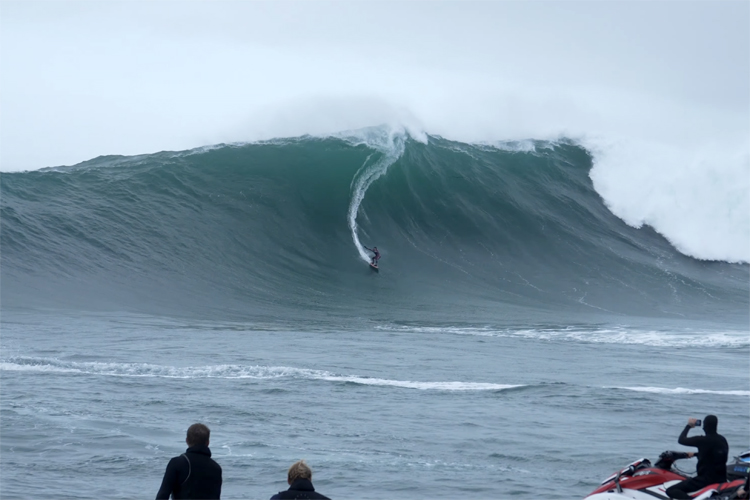
Bianca Valenti, Alo Slebir, Wilem Banks, and Jojo Roper were the standout wave riders of the 2024 Mavericks Surf Awards.
Since the World Surf League (WSL) stopped running competitions at Mavericks in 2019, citing "various logistical challenges," the legendary surf break has been off the radar.
But the swells kept coming, and the epic sessions never ceased to provide memorable moments.
That's also good news for the local community, who has enjoyed the cold water surf spot a little bit more for themselves.
Five years ago, Jeff Clark, the eternal Mavericks pioneer, found a way to dodge the expensive permit to run a contest at his dear wave.
Clark, alongside Chris Cuvelier, created the Mavericks Surf Awards.
The video performance contest invites surfers and videographers to submit their best videos of Mavericks throughout the winter season.
At the end of the competition window, a panel of judges analyzes the rides and reaches a verdict based on specific criteria.
The winners are announced, and the $25,000 prize money split between the surfer (60 percent) and the videographer/photographer (40 percent).
The Mavericks of 2024
The best-performing surfers of the 2024 season at the infamous Northern California surf break have been decided.
The winners' ceremony was held at San Benito House in Half Moon Bay.
In the men's division, Alo Slebir won the Performer of the Year award for the second consecutive year.
"It's been a pleasure surfing Mavericks with some amazing humans the last few years," expressed Slebir.
"The level continues to get pushed from both the younger and aspiring older generations."
With an air-drop, Wilem Banks from Santa Cruz took home the Ride of the Year award.
On March 11, 2024, Jojo Roper took off on a liquid monster that earned the Biggest Wave award.
In the women's division, Bianca Valenti dominated the event for the third year and collected all three trophies.
"Two things I did this weekend were impossible ten years ago: I won all the Mavericks awards and got equally paid," the big wave surfer added.
The 2024 Mavericks Surf Awards ran from October 1, 2023, to April 15, 2024.
2024 Mavericks Surf Awards | Winners
Men
- Performer of the Year: Alo Slebir
- Ride of the Year: Wilem Banks
- Biggest Wave: Jojo Roper
Women
- Performer of the Year: Bianca Valenti
- Ride of the Year: Bianca Valenti
- Biggest Wave: Bianca Valenti
https://www.surfertoday.com/surfing/the-2024-mavericks-surf-awards-champions

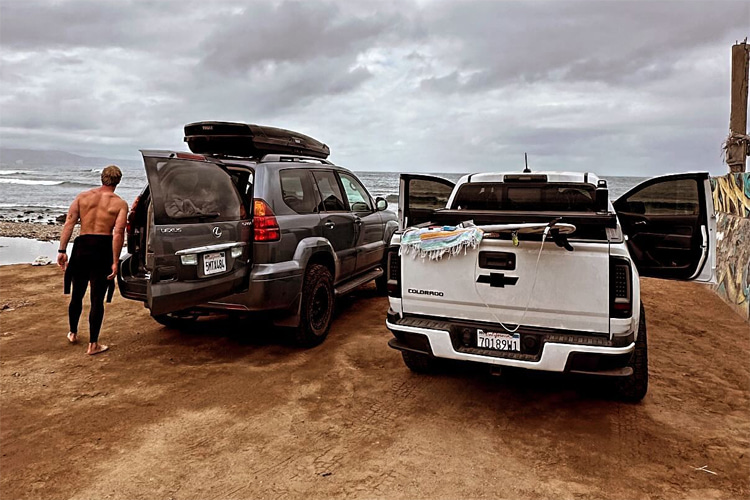
Three foreign surfers were murdered in Baja California, Mexico.
The bodies of Australian brothers Callum and Jake Robinson and their American friend Jack Carter Rhoad were found six kilometers from the camping site where they were supposedly killed.
The victims were buried in a 50-foot-deep well and displayed signs of gunshots to the head.
A fourth body was also found in the same place, and according to the Mexican authorities, it had "been there for a long time."
The families of the victims have already identified the bodies.
The trio's disappearance was reported after they failed to check in to their pre-arranged accommodation in Rosarito, Mexico.
They were last seen alive on the April 28-29 weekend at K-38, a surf spot 15 kilometers south of Rosarito.
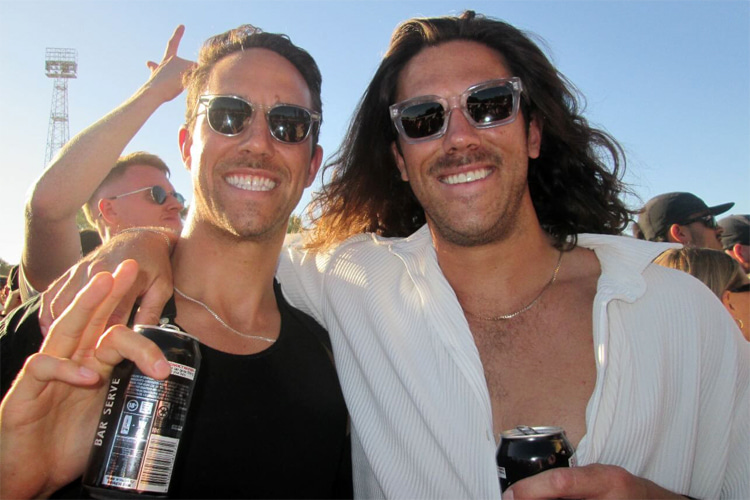
Killed for Tires
The investigation led by the state's attorney general, María Elena Andrade Ramírez, believes the surfers were attacked by thieves who wanted to steal their car, possibly motivated by a desire for the tires.
"The attackers drove by [the travelers' campsite] in their vehicle," Andrade Ramírez said.
"They approached, with the intention of stealing their vehicle and taking the tires and other parts to put them on the older-model pickup they were driving."
"Upon approaching and surprising [the missing men], there was surely resistance, and these people, the attackers, took out a firearm they had and took their lives."
"When what was meant to be a robbery had got out of control, they tried to dispose of the bodies by throwing them into a well."
"They were not attacked because they were tourists - the intent was to steal their vehicle."
According to the Baja California attorney general, the assassins burned the tents and covered the well with the surfboards.
The missing surfers' truck, a white Chevrolet Colorado, was found burned in a nearby ranch.
Three Mexican nationals have been detained - a local man, his girlfriend, and his brother - with one facing charges of kidnapping.
The remaining two are detained on suspicion of possessing crystal methamphetamine, although Andrade Ramírez has not ruled out the possibility of their involvement in the crime.
She emphasized that additional individuals likely participated in the attack.
Among the suspects, it is believed that at least one directly engaged in the fatal actions.
Per Mexican legal protocol, prosecutors have identified this individual solely by his first name, Jesús Gerardo, also known as "El Kekas," a colloquial term referencing quesadillas or cheese tortillas.
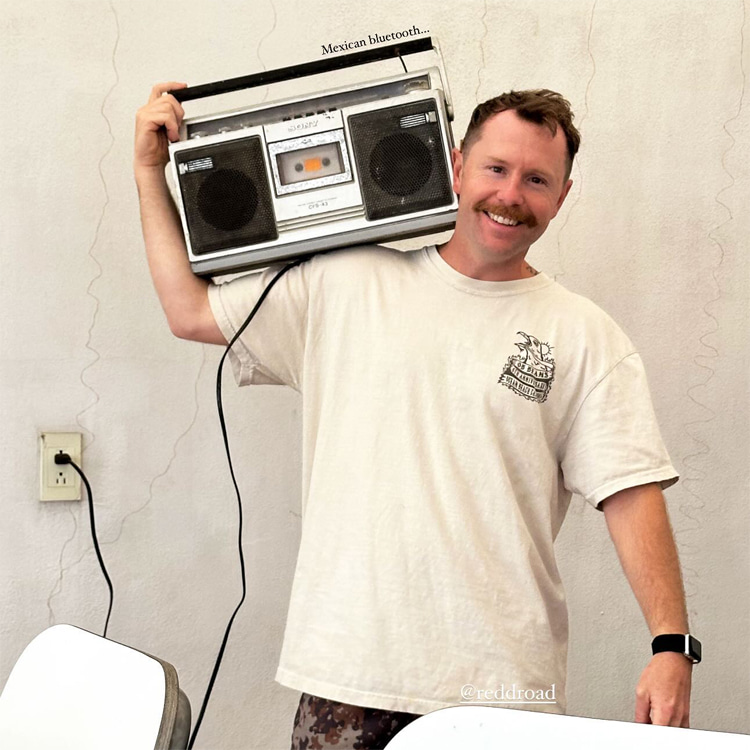
30,000 Homicides in One Year
Randy Dible, a San Diego-based photographer and close friend of Callum Robinson, shared his regret with the Australian press over directing Callum to a surf spot in Baja called La Bocana.
Due to a last-minute commitment, Dible couldn't join the trio and instead provided Callum with directions, even drawing a map on a napkin.
Reflecting on his decision, stated, "I told him about this place because I'd been traveling down there all over that country for 30 years so I know it like the back of my hand and I knew just where to go."
"I wish I'd never met up with him that day. I feel really bad. I feel guilty. It's just starting to hit home."
Callum, 33, was a professional lacrosse player living in San Diego.
Jake, 30, was a doctor who had flown from Australia two weeks ago to accompany his brother to the Coachella music festival in California.
Subsequently, they embarked on a journey across the border from San Diego into Mexico, joined by Rhoad, to surf the Baja California coastline.
Jack Carter Rhoad, 30, was an apparel designer and lived in San Diego.
In 2023, Mexico recorded over 30,000 homicides, marking the sixth consecutive year with such alarming figures. Moreover, 100,000 individuals remain missing.
The Baja California surfing community has held paddle-outs in memory of their fellow wave riders.
Words by Luís MP | Founder of SurferToday.com
https://www.surfertoday.com/surfing/three-surfers-brutally-murdered-in-baja-california,-mexico

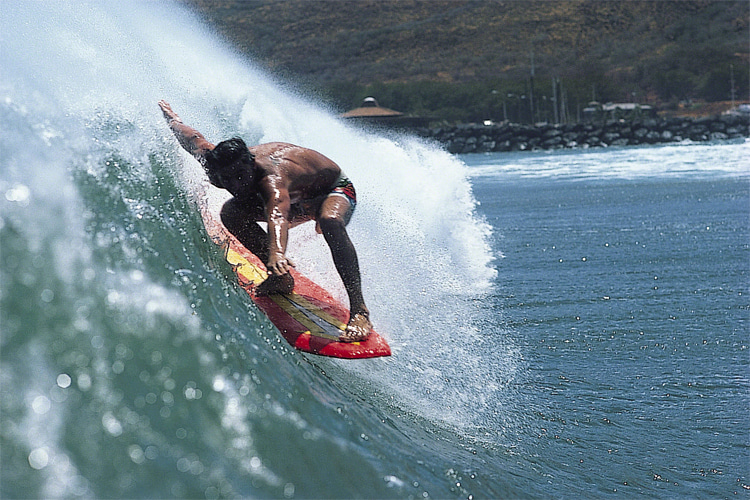
Imagine a wave that behaves like a super-fast cargo train, rushing to reach its destiny at incredible speed. This wave is real. It's called Maalaea.
There are few places in the world where the number of surfers in the water on a given day surpasses the local population.
The census-designated place (CDP) of Mā'alaea in Maui is home to just around 310 people, but its waters can get crowded when south swells hit its beachless shoreline.
Welcome to Maalaea Freight Trains, the nickname for what many believe to be the world's fastest, makeable surfing wave.
The bold claim has solid structures, though.
The legendary surf spot is located in Ma'alaea Bay, on the west coast of Maui, east of Ma'alaea Harbor, in front of a series of condos and resort hotels.
Who would've thought that a world-class right-hand reef break could pop up in a place where you cannot even lay a beach towel?
The secret lies in the stone wall of the harbor that grooms this unlikely wave.
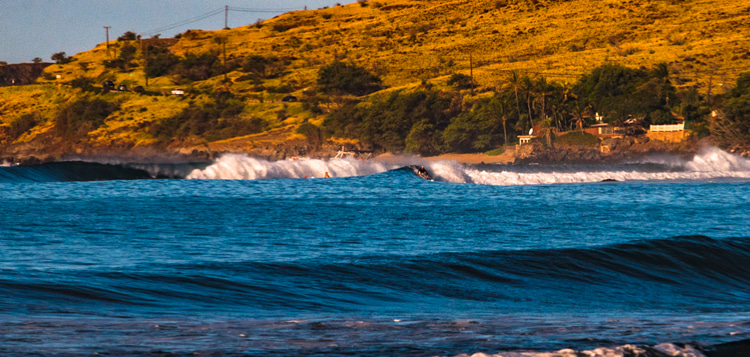
Maui's F1 Surfing Wave
The wave has many names. In the surfing world, it is known as Maalaea, Freight Trains, or Ma'alaea Pipeline.
In the years preceding World War II, Mā'alaea Bay attracted longboard surfers with its infectious waves.
Its central star, Freight Trains, was immediately hailed as one of the fastest rideable waves globally, contingent upon specific conditions for its occurrence.
In the late 1960s, the Valley Isle gained notoriety as a psychedelic hotspot influenced by LSD, an aspect of its culture famously showcased in the Jimi Hendrix concert film "Rainbow Bridge."
The movie, predominantly shot in Haleakalā Crater, also featured surfing clips from Maalaea and was completed just three months before Hendrix's death.
According to surf historian Matt Warshaw, author of "The Encyclopedia of Surfing," "local surfer Joseph 'Buddy Boy' Kaohi was so highly regarded at Maalaea in the late 1960s and early 1970s that the break was sometimes referred to as 'Buddy's Bay.'"
But it was only with the shortboard revolution that the world's fastest right-hander became fully rideable.
Other standout Maalaea riders include Maui residents Analu DePonte, Brad Lewis, Chris Lassen, Chris Vandervoort, Eli Hanneman, Eric Totah, Ian Gentil, Ian Walsh, Imaikalani DeVault, Jackson Bunch Kai Lenny, Kelson Lau, Kevin Sullivan, Lloyd Ishmine, Mark Anderson, Sai Smiley, Tanner Hendrickson, Tom Dosland, Ty Simpson-Kane, Tyler Larronde, and many others.
The break's local bathymetry plays a critical role in the temperamental and machine-like wave's anatomy.
The seabed is made of sharp coral and lava rock, angled at just the right degree, producing the barreling bullet train we occasionally see on videos.
When the surf gets above six feet (1.82 meters), you'll need a lot of self-confidence and experience to handle the tricky and steep take-off.
However, once you drop in, you're sucked into a speedy Formula 1 racetrack that reminds us of Banzai Pipeline but in reverse. Or a blend of Nias and Skeleton Bay.
The right-hand tube ride's length ranges between 150 and 300-plus yards. Not bad, right?
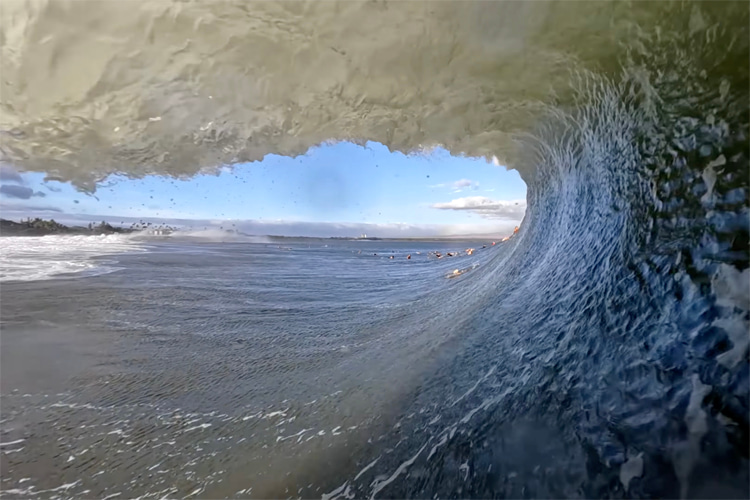
Fickle and Rare
The wave features five sections:
- Off the Wall;
- Impossibles;
- Freight Trains;
- Down the Line;
- Inside Section;
Maalaea Freight Train requires a 3-to-5-foot swell to get things started, ideally on low tide.
Nevertheless, it only reaches firing status with 12-foot-plus waves courtesy of purple-to-black S-SW swells lined up perfectly with an eight-mile-wide gap between the island of Kahoolawe and the southwest tip of Maui and SE winds.
Do not expect this Maui gem to trigger historical sessions every week. Due to its picky requirement, Maalaea only shines in all its glory a handful of times a year.
And that probably explains why no contests have ever been held at this magical surfing arena.
On epic days, the word will spread quickly, meaning the lineup and the take-off zone tickets for this liquid TGV sell fast.
In the 21st century, Maui's Freight Trains delivered superb conditions on two occasions, only - 2005 and 2022.
Maalaea is a fickle, advanced, and expert-only wave. Beware of the shallow reef, rip currents, and uber-hollow waves.
In addition, make sure to make a wise wave selection, as a set could pump over 15 nonstop waves, and getting caught inside might result in a multiple-wave hold-down.
The chances of someone dropping in as a falling lip is about to engulf your F1 car are also high.
The truth is that many get covered, but only a few find the exit. Some actually state that only one-fourth of the waves are completed.
Equipment choice is critical.
You'll need a surfboard that can enter the wave as quickly as possible and doesn't pick up the 20-30 knots offshore wind that often blows strong.
Spring and summer are the best times of the year to get the session of your life at Maalaea Freight Trains.
If it isn't pumping, there will always be Honolua Bay and Jaws/Peahi.
Forever Protected
From time to time, developers have proposed enlarging Maalaea Harbor, which was constructed in 1952.
It was widely believed that any expansion would inevitably jeopardize or destroy the quality of the surf in the area.
In 2002, "Maalaea: A Cry for Help," a documentary highlighting the ongoing conflicts between developers and the Maalaea break, was released.
The good news is that in 2012, after 23 years of intense activism, the iconic Maui wave was preserved.
The victory was declared following the Hawaii Department of Land and Natural Resources and the United States Army Corps of Engineers' decision to abandon plans to extend the harbor's breakwater.
Groups like the Surfrider Foundation have vehemently opposed the project, fearing significant damage to coral reefs and the cherished surf spot.
Authorities cited concerns over high costs, community sentiment, and environmental impacts for suspending the breakwater project.
Watch Maalaea's stunning Freight Trains at their best in the surf movies "Angry Sea" (1963), "Adventures in Paradise" (1982), "Amazing Surf Stories "(1986), and "Maui '99" (2000).
Words by Luís MP | Founder of SurferToday.com
https://www.surfertoday.com/surfing/maalaea-freight-trains-the-worlds-fastest-wave

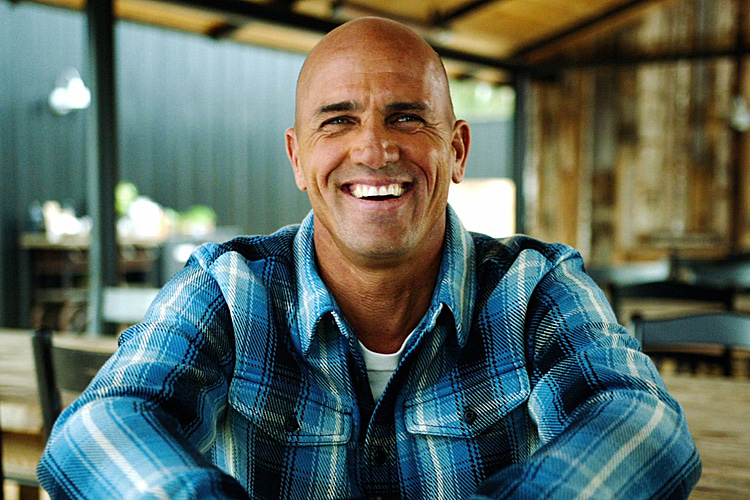
Kelly Slater's entrepreneurial journey has always been relatively kept under the radar, with surfing doing most of his talking. Let's take a look at how the Floridian planned the move from waves to the boardroom.
The world's greatest athletes are usually active businesspeople with multiple entrepreneurial projects in various fields of activity.
Surfers are no different.
The earnings accumulated from years of sponsorship deals and prize money must be channeled to reproductive gains.
Investing in new and established business ventures is a smart way to secure a steady financial future when retirement arrives.
Kelly Slater has been one of the most active professional surfers in embracing risk and generating wealth through company development.
Despite retiring from day-to-day competitive surfing in 2024, his business interests date back to the late 1990s and early 2000s.
Slater's first taste of success out of the water came when he lent his name to Activision's 2002 console video game "Kelly Slater's Pro Surfer."
The title made Kelly Slater a global personal brand anchored on his achievements and accolades as a sportsman.
But the first real risk-taking venture was undoubtedly Kelly Slater Wave Company, into which the pro surfer poured millions of his hard-earned dollars.
The goal was to build a wave pool like nothing the world had ever seen.
Creating an outstanding artificial wave that surfers could ride took years of research and development, i.e., financial resources.
And when the proof of concept was cleared, another $30 million was invested in building the basin in Lemoore, Central California.
In the meantime, Slater created new products and brands, co-founded other small niche businesses, and endorsed a few more.
Here are the list and profiles of Kelly Slater's main business interests.
Kelly Slater Wave Co.
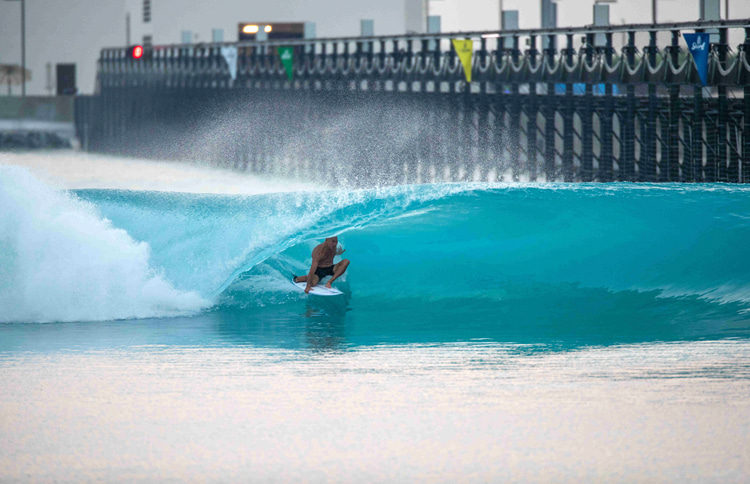
Kelly Slater Wave Co. (KSWC) is perhaps the founder's greatest and most impactful business venture.
It's the company that created the world's first artificial barreling wave.
After years of behind-the-scenes tests and fine-tuning, the 11-time world champion surfer revealed his Surf Ranch to the public in December 2015.
Six months later, the World Surf League (WSL) announced the acquisition of a majority stake in KSWC for an undisclosed sum.
Website: kswaveco.com
Firewire Surfboards
Firewire Surfboards was founded in 2006 by Australian surfboard shaper Nev Hyman, a man who had already created Odyssey Surfboards in 1975.
The company revolutionized the industry by introducing advanced CAD/CAM software in surfboard construction.
Firewire Surfboards also introduced new and more sustainable materials in the manufacturing process, as well as innovative building techniques and technologies.
In 2015, Slater secured 70 percent of the company and became a majority shareholder.
Website: firewiresurfboards.com
Outerknown
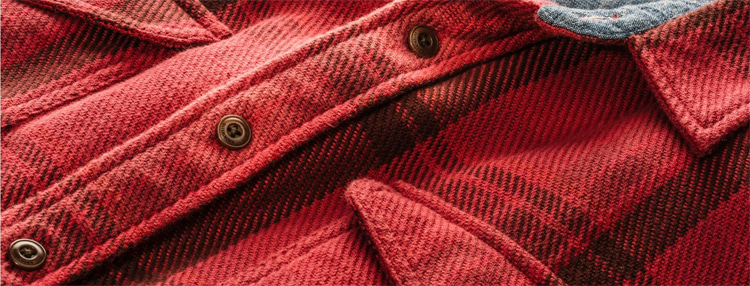
Outerknown is Kelly Slater's adventure into the competitive market of sustainable clothing.
The pro surfer joined forces with creative director John Moore to create an apparel brand committed to responsible sourcing practices and the welfare of everyone they work with, from the farmer to the customer.
The label produces a series of premium wardrobe items using the highest quality and most sustainable materials, resulting in 95 percent of the line being made with organic, Regenerative Organic Certified (ROC), recycled, or regenerated fibers.
As of 2024, Outerknown operates eight retail stores across the US, an online shop, and Outerworn, the resale platform that keeps clothes in circularity rather than in landfills.
Website: outerknown.com
Slater Designs
Slater Designs is Kelly's signature collection of surfboards and surf accessories.
Launched in 2016, it reflects the surfer's personal quiver of boards shaped by world-renowned shapers.
The brand works in conjunction with Firewire Surfboards and designs templates made from sustainable materials, including entropy bio-resin and other less harmful cores.
KLLY
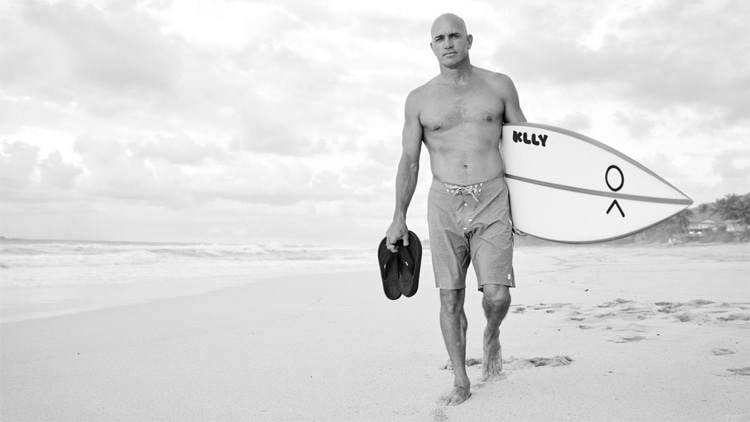
KLLY is a sustainable footwear company launched in 2023 by Kelly Slater.
The brand's flagship is a flip-flop designed for all-day wear, comfort, and outdoor activities.
The design philosophy behind KLLY footwear is deeply rooted in nature, particularly inspired by the relationship between the moon, the ocean, and sea creatures like turtles.
For example, the tread pattern on the sandal is inspired by the shell of a sea turtle, with 13 large plates representing lunar cycles in a year and 28 smaller plates representing the days in each cycle.
The footbed of the sandal is designed to mimic the gravitational pull of the moon on ocean tides, promoting healthy alignment and support.
In terms of materials, KLLY sandals are made using rPET & BLOOM foam derived from algae.
The choice of materials is a commitment to reducing environmental impact, as algae-based materials help combat harmful algae blooms and contribute to restoring and maintaining healthy ecosystems.
Website: klly.com
Endorfins
Endorfins is a range of surfboard fins launched by the Floridian surfer.
Slater reimagined classic fin designs and introduced new construction methods aimed at performing better while minimizing their environmental impact.
One of the key features of Endorfins is their ability to float.
Unlike conventional fins that are often lost or discarded in the ocean, contributing to pollution, Endorfins are designed to remain buoyant, reducing the likelihood of them becoming marine debris.
They offset the carbon footprint of fin production by supporting initiatives such as Sea Trees, which involves conserving kelp forests in California, protecting rainforests in Africa, and planting mangrove trees in Indonesia.
Endorfins are positioned as an alternative to other popular fin systems like FCS II and Futures and are compatible with existing surfboards.
Website: firewiresurfboards.com
Yorks
Yorks is a recycled lumber business based in Nova Scotia, Canada.
The company specializes in repurposing wood sourced from old barns, piers, and other salvaged sources, turning them into new products.
The initiative was sparked by Kelly Slater's involvement, influenced by a friend's deep passion for wood and Slater's own love for surfing.
Yorks plans to use the profits generated from their recycled lumber business to purchase properties in lesser-known surf locations worldwide.
These properties would then be utilized to build eco-friendly houses using their reclaimed materials.
Solento Tequila
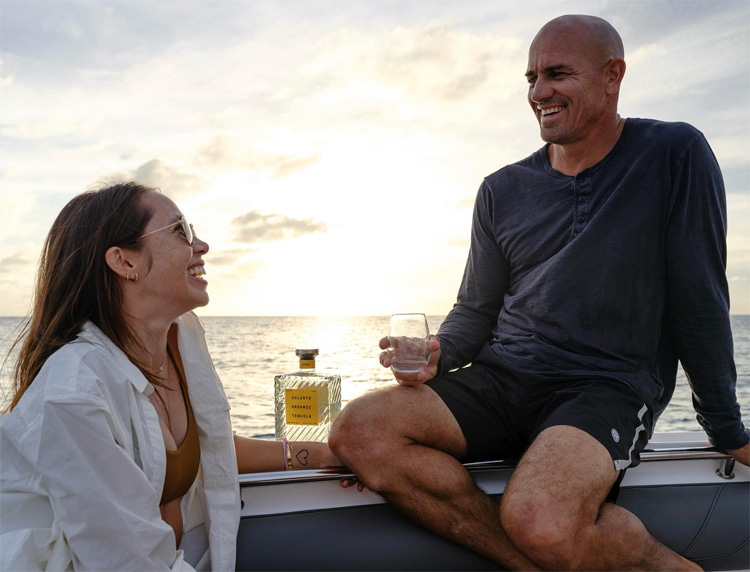
Solento Tequila is an award-winning, USDA-certified organic tequila range founded by surf filmmaker and tequila connoisseur Taylor Steele.
The philosophy behind Solento is rooted in the idea of slowing down and being present, reflected in its name, which is derived from the Spanish translation of "slow sun."
It is free from pesticides, synthetic fertilizers, genetically modified organisms (GMOs), and additives.
Despite not being the average alcoholic drink consumer, Slater endorsed the brand whose process of creating Solento Tequila begins with the slow growth of organic agave under the Mexican sun for seven years.
Harvested meticulously in small batches from a single estate in Amatitán, Jalisco, the agave hearts are then cooked in brick ovens for two days before being pressed to extract their juices.
Fermented and distilled naturally, Solento Tequila emerges with pure flavor, gaining complexity when aged in American oak barrels.
Website: solentotequila.com
Rythmia
Rythmia is a retreat center located in Guanacaste, Costa Rica, for individuals committed to genuine personal change.
It offers a week-long immersive experience and ayahuasca-based comprehensive program to facilitate personal growth and healing.
The program integrates ancient teachings of plant medicine from the Columbian lineage with various complementary modalities to create an optimal environment for healing.
Led by skilled shamans with training in the Columbian lineage, the program includes four ayahuasca ceremonies, complemented by Rev. Michael Beckwith's "The Answer is You" classes, integration workshops, intention-setting sessions, yoga, meditation, dance, and rhythmic breathwork.
Kelly Slater is a member of the Rythmia board of directors.
Website: rythmia.com
Purps
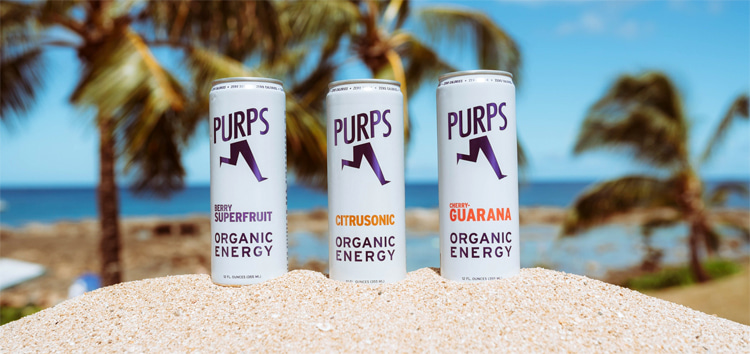
Purps is an organic energy drink created by PM Tenore, founder of RVCA, Dr. Chris Schaumburg, PhD in autoimmune deficiency and inflammation, and Kelly Slater.
It stands out as the only organic energy drink with zero calories and zero sugar, packaged in environmentally friendly packaging.
Formulated to offer a healthy energy boost, Purps Organic Energy utilizes a blend of all plant-based sources of natural caffeine.
The blend includes ingredients such as yerba mate, green tea berry, coffee berry, Indian gooseberry, and pomegranate, providing a natural and sustained energy lift without the drawbacks of sugar or artificial additives.
Purps products are crafted with premium ingredients, prioritizing quality and health. They are free from artificial colors, artificial flavors, and preservatives, ensuring a clean and pure energy drink experience.
Website: purps.com
Words by Luís MP | Founder of SurferToday.com
https://www.surfertoday.com/surfing/the-business-empire-of-kelly-slater

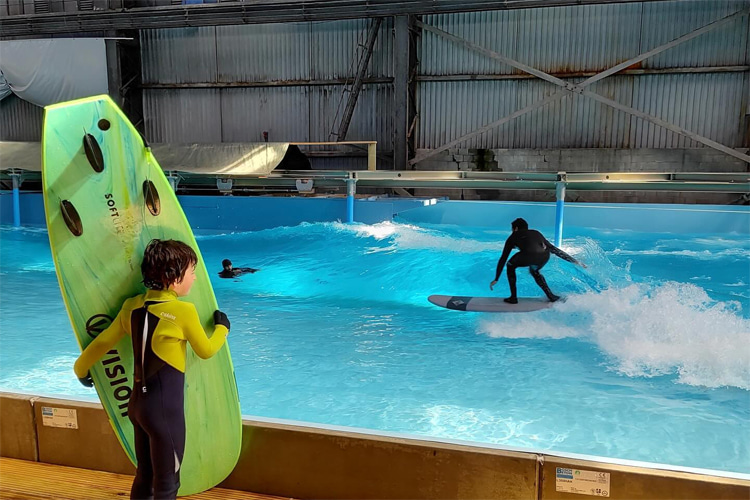
Surpoel, Europe's first indoor wave pool, is already pumping waves. The Dutch structure, powered by 24/7 Waves, has entered the testing stage.
If you've ever played the best-ever surfing game, you'll find resemblances with it.
In "Kelly Slater's Pro Surfer," we are invited to practice our virtual surfing skills at the Wave House, a large hangar turned into a wave pool, before moving to the real waves.
When the console video game was released, riding waves and getting barrels under a ceiling seemed like something you could only do in dreams - or in Japan at the legendary Seagaia Ocean Dome.
However, the unrealistic vision of surfing under a metal roof slowly became a reality.
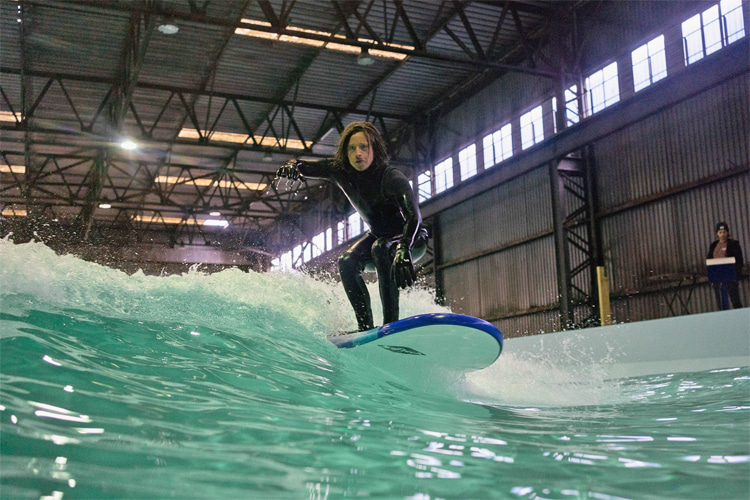
Hangar Surfing
Joeri Fredriks, Jeroen den Otter, and Steven Schmied are three passionate surfers who have dared to try something new.
After securing a physical structure that is half the size of a football pitch and setting up a successful crowdfunding campaign, they got to work.
In Binckhorst, an industrial area of The Hague in the Netherlands, they started installing their proprietary wave-generating technology.
After five years of hard work that involved partnerships with The Hague University of Applied Sciences, Delft University of Technology, and ROC Mondriaan, Surpoel has finally reached the testing phase.
Despite the need for fine-tuning and improvement, this project's potential is undeniable. The trio's ultimate goal is to create the conditions to "surf a perfect wave every day" in the city.
The founders of 24/7, the startup behind Surfpoel, say, "The facility is built from sustainable materials, the vast majority of which can be reused."
"In addition, it is also energy efficient compared to other wave pool techniques in the world."
The wave basin is 70 meters long and 17.5 meters wide.
The Dutch entrepreneurs say the structure produces, in theory, 120 nine-second, 1.5-meter waves per hour.
The first full-scale prototype and proof of concept is now making waves and gathering data to optimize the size and shape of the wave.
The 24/7 Waves team says they can extend the length of the pool to 140 meters and increase the height of the liquid walls up to two meters.
The artificial wave can be adjusted from small breaking waves for beginners to steep waves that can even barrel for advanced and pro surfers.
The Five-Year Loan Financing Model
The project is anchored in a loan campaign that returns 3.5 percent annual interest in five years, plus surfing time on the pool.
By May 2024, over 500 investors joined the urban surfing dream.
The Dutch wave pool technology allows it to be built indoors and outdoors, above or below the ground.
The basin can feature single-wave rectangular pools, double-sided, two-wave rectangular, and circular pools with two or more waves.
24/7 Waves already have potential customers from the United States, Germany, Belgium, and the Netherlands.
Words by Luís MP | Founder of SurferToday.com
https://www.surfertoday.com/surfing/surfpoel-first-european-indoor-wave-pool-enters-testing-stage

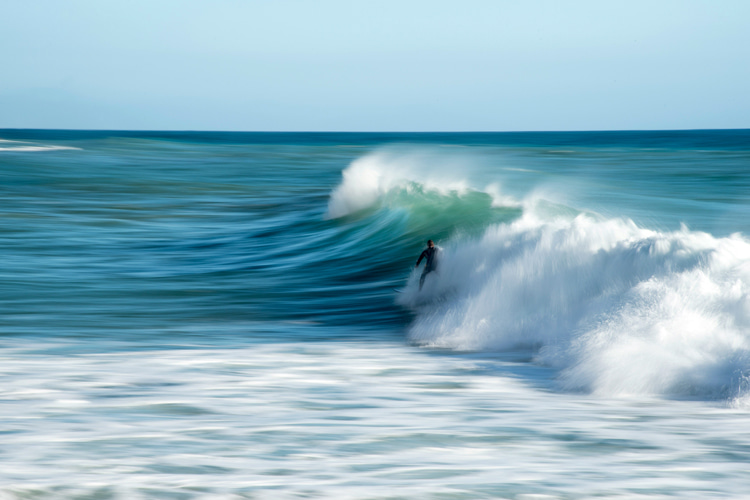
Italy is not the first country you will think of when planning a surf trip around Europe.
However, with its 4,720 miles (7,600 kilometers) of coastline and over 320 rideable surf breaks, there are plenty of fun opportunities popping up when favorable winds and swells align.
The Italian Peninsula is in the heart of the Mediterranean Sea.
This enclosed region depends on the low-pressure fronts from the north, west, or south and enough wind to generate surfable waves around "The Boot."
So, even though consistency is not the best word to characterize Italy's surfing potential, there are certainly plenty of different surf spots capable of producing a few fun gems.
Can you get barreled in an Italian wave? For sure? Are there overhead ramps on offer? Definitely.
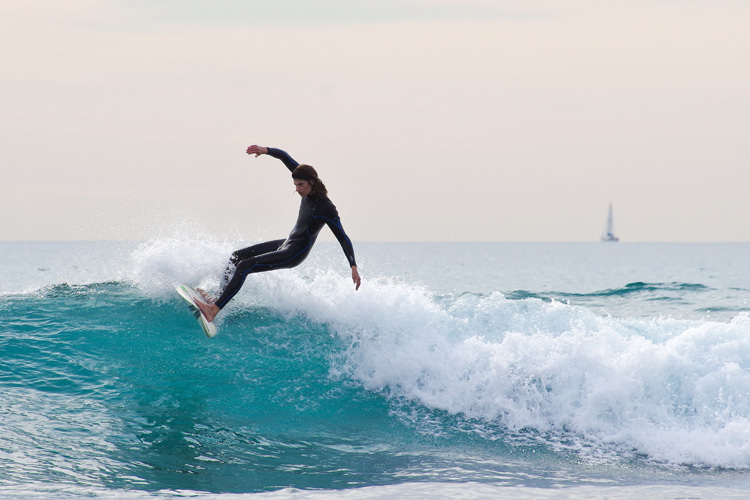
The Italian Northwest
Liguria is probably the most reliable surfing region in Italy.
The crescent-shaped area that goes from San Remo in the west to Viareggio in the East hosts a series of above-average waves along its 175-mile (285-kilometer) coastline.
The secret lies in the geographical position facing the Ligurian Sea and getting the remaining swell energy entering the Strait of Gibraltar, as well as the exposure to the Mistral wind, the driving force for surf in Northern Italy.
Mistral helps build decent swells on the Ligurian reefs by blowing offshore along the Mediterranean coast all the way from NW Italy and across the French coast toward NE Spain.
Ultimately, the region gets around 120 days of surfing per year, even though most could be whipped by onshore winds and small waves.
Water temperatures along the western coast of Italy span from 53-78 °F (12-26 °C).
History
The saga of Italian surfing commences with Peter Troy, the renowned Australian surf explorer, who documented his first ride on an Italian wave in Genova (Liguria) in 1963.
His venturesome exploits, though ahead of their time, failed to resonate with the local populace until the late 1970s and early 1980s, when the inaugural generation of surfers emerged.
Inspired by cult classics like "Big Wednesday" and initial forays to oceanic swells (predominantly in Biarritz), numerous small communities sprang up simultaneously across the peninsula.
Tuscany's Viareggio took center stage, becoming the nucleus where the inaugural club (Italia Wave Surf Team), the premier shop (Natural Surf), and the maiden contests took root.
Leading the charge in this region were Michele and Alessandro Dini, while in Genova, the Marco and Alberto Fracas brothers reveled in the waves of Bogliasco.
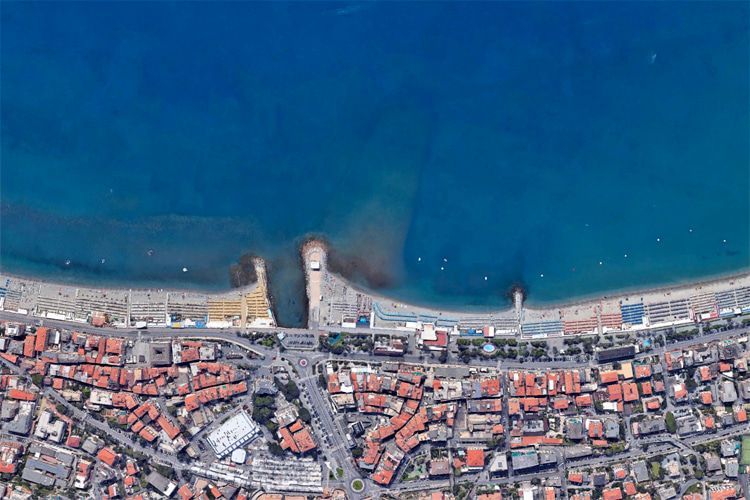
Barreling Waves in the Ligurian Sea
Varazze is one of Italy's most popular surf breaks.
The spot is located 20 miles (35 kilometers) west of Genova in the coastal village with the same name.
It is the focal point of many Italian surfers and French surf travelers.
La Secca, Varazze's main break near Molo Marinai d'Italia, is a powerful A-frame peak that shines with SW and SE and a strong Mistral NW wind.
The right-hander provides a long, workable ride that will take you all the way to the inside; the left-hander provides a shorter yet intense wave-riding experience.
The local shallow human-made reef made of rocks is one of the secrets of this Italian gem.
Interestingly, Varazze's wave quality is the result of one of those random events that suddenly create a wave.
The surf spot's bed of rocky stones was formed by debris inadvertently dumped from the mountain during the works to build a motorway in the 1960s.
But for the barrels to come to life, surfers need windless or offshore wind conditions.
This Italian surfing machine hardly varies, making it sometimes "too perfect." It reminds us of something between a Southern California point break and a southwest of France jetty break.
To get to the peak, you either paddle around it from down the beach or try jumping from the nearby pier on a smaller day.
Varazze is mostly a wave for intermediate and advanced surfers, so assess your experience level before paddling out, especially during wintertime.
The take-off could be challenging, so prepare to hold on to your rail.
If you survive the early seconds of the ride, think about the incoming steep inside section that will want to suck you and your board.
Also, respect the local surfers, as the surf break often gets crowded on average, good and epic days.
In November 2023, Varazze witnessed one of the biggest days of waves of the decade, with double overhead walls of water marching relentlessly toward the shore, courtesy of Storm Ciarán's SW swells.
Although waves break on average once every three days, the best season is Spring.
Words by Luís MP | Founder of SurferToday.com
https://www.surfertoday.com/surfing/varazze-probably-the-best-surfing-wave-in-italy

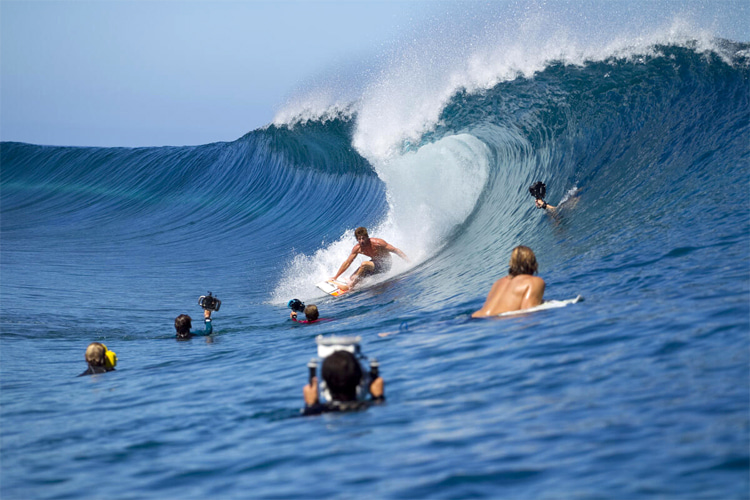
Bruce Irons embarked on a transformative health trial at Beond Ibogaine, a specialized clinic in Cancún, Mexico, where he is exploring the potential of ibogaine-assisted therapy.
Ibogaine is a naturally occurring psychedelic substance derived from the iboga shrub, traditionally used in West African healing rituals.
In recent years, it has gained attention for its potential to treat addiction and mental health issues like depression, anxiety, and PTSD.
Irons' decision to undergo this follows a long battle with mental health issues, fueled by the tragic loss of his brother and three-time world champion, Andy Irons, who also battled inner demons.
The Beyond Ibogaine program combines ibogaine treatment with various "adjunct therapies," including cold therapy, meditation, sound healing, art therapy, movement, and massage.
This holistic approach aims to support patients as they work through the powerful and introspective experience induced by ibogaine.
In a video message, Irons described the Mexican clinic as a place of "open arms" and understanding, as opposed to his perception of traditional Western medicine and rehab facilities.
The winner of the 2001 Pipe Masters and the 2004 Eddie Aikau Invitational underlined the clinic's success rates and the genuine care provided by the staff.
The will to get better and overcome his mental health issues was inspired by his brother Andy.
"My brother was a world champion. He's the baddest motherf***er that ever lived, and I'm doing this for him and all my other fallen brothers and friends who died," says Irons in the video.
Psychedelic Plant Medicine Against Mental Health Issues
Both ups and downs and mental health struggles, including depression and drug use, have punctuated Bruce's life.
In the video released by the Mexican health treatment center, the Hawaiian highlights the effectiveness of the ibogaine treatment provided, which allows individuals to reach into their minds and visions, facilitating profound personal insights and growth.
Bruce stresses the importance of putting in the work and being honest with oneself during the healing process he chose to embrace.
"It doesn't matter what your current state is, how bad it is, how worse it is," added the pro surfer.
"It always can get worse, and there's always someone that's looking a little shittier, but when I came to this place, it's basically with open arms, no judgment, resentment, nothing."
It's important to note that ibogaine is a powerful drug with potential risks, and its use remains controversial.
It is currently illegal to use therapeutically in the United States.
Bruce Irons, 44, feels he can still shine in Hawaii's most challenging waves.
"I still feel like I got one win in me left. Or two. One more Pipe Masters, one more Eddie. Let's do it. I'm f***ing going for it."
Words by Luís MP | Founder of SurferToday.com
https://www.surfertoday.com/surfing/bruce-irons-battles-mental-health-issues-with-psychedelic-therapy

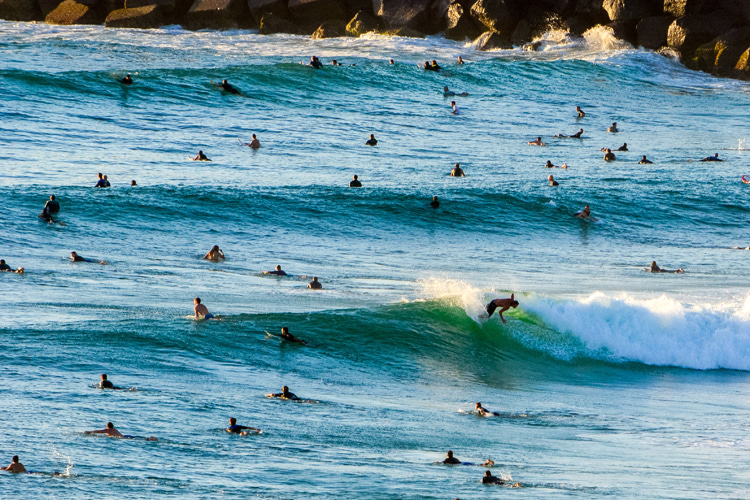
Life changes when you start working. And so does your surfing.
Most of the freedom and flexible time schedules you had before you became a grown-up adult with responsibilities and bills to pay ends or gets seriously axed when you get your first job.
The days when you could put on a wetsuit and just paddle out when the surf's great slowly vanish as you progress through your 20s and 30s.
Although this is not an inevitable scenario for every surfer out there, it's the most common one.
So, 99 percent of all hard-working recreational surfers end up with two days to shred and get their golden share of waves.
We end up in the so-called weekend warrior basket, the silent majority that surf media professionals, influencers, and wanna-be pro surfers often mock.
And then, if you commit the ultimate sin of starting a family, things get even worse for a while - weekends turn into months and years.
Some longtime surfers even lose the will to get in the water and enjoy the pleasures of catching a few "just like in the old times."
Passion fades away, and aging doesn't help either.
So, if Saturday and Sunday are the only days left for a quick surf escape, we try to make it work, come rain or come shine.
One of the best ways to transform these golden opportunities into pleasurable sessions is by choosing a consistent break, ideally close to home.
The problem is that we all follow the same rationale.
Consequently, beaches known for their average-to-good conditions all year round get crowded, if not impossibly crowded.
And then, on top of that, there's the uncontrolled surf school army, taking over the battlefield from the early hours of the morning until the sun sets and darkness kicks in.
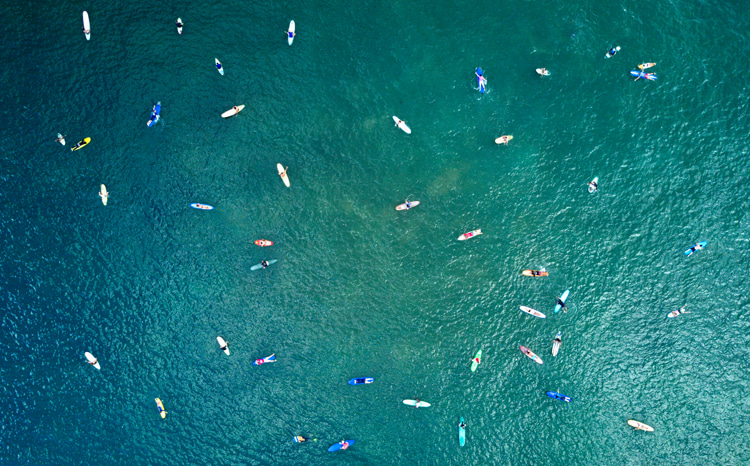
Pain Point Reached
One of these Saturdays, I exercised my weekend warrior right to ride a few good waves for an hour.
I tried to time the tides and be at the beach as early as a working man in his 40s could.
I guess I was ready to get wet before 9 in the morning.
By the time I was paddling out with my hair still dry, there were already a few partners in crime looking like they'd had their weekly share of fun.
No worries. The vibes were good.
However, in less than half an hour, I was already surrounded by dozens - literally - of first-timers wearing their multi-colored jerseys, each representing a surf school business.
Luck is also not on my side.
My home break is one of the busiest in Europe, located within bike, metro, or car distance from one of the most en-vogue tourist destinations in the Old Continent of the last decade.
Despite being a long beach break with multiple peaks that pump around 300 days of surfing a year, its resources are not infinite.
Moreover, space is limited.
And if you think you can teach beginner surfers the basic rules of surf etiquette, forget it.
They will not look left and right before paddling into a perfect wave or a close-out guillotine.
They don't care, and instructors often follow the pattern.
Suddenly, I was encircled by colored jerseys, soft-top surfboards, and all sorts of in-between set chats.
The word "surrounded" could fit in the concept of vital space a surfer needs to exercise their art.
But this wasn't the case. I had surf pupils within a board's reach.
I had to plan how to turn the board around to catch a wave. And when I was successful, there was another challenge ahead - to complete a ride.
I am not one of those who whistle or yell at others to ensure my priority is respected.
In case of imminent danger, I respectfully emit a warning - usually, "Attention!" - to avoid disaster, injuries, and surfboard dings.
So, every time I caught a wave, I would have a drop-in incident, putting an end to an average ride.
And then, they smile back at you while still riding their boards prone toward the beach.
One time is OK; twice could happen. But three, four, and five times is a pattern.
At some point, I decided to call it quits and paddled in.
As soon I was taking off my leash my leash, I looked back at the lineup and realized this wasn't surfing.
The peak I had chosen to release my weekly stress had around 20-30 people thinking they were having fun.
They were all six feet apart, probably thinking they were having the time of their lives.
I immediately told myself I would not come back here again on a weekend.
This was not surfing; this was not fun. I actually didn't even know what that was.
Was it masochism? The need to belong to a cool tribe? A photo-op for social media?
How can they feel they're experiencing the exhilarating rush of walking on water when there's so much noise and many boards around them?
As I walked up the beach, I felt equally frustrated and depressed.
Getting Away
I am one of those who believe the world would be a better place if more people surfed.
I am genuinely convinced my beloved pastime improves people's lives.
But I cannot deny that getting surfing into the mainstream and a wider audience is simultaneously killing the experience for everyone.
Is there a balance between these apparently opposing worlds? Where do you draw the line between healthy and enjoyable lineups and promoting surfing and its virtues?
In the past, I adopted the rule that tells my inner self to choose an average peak that is often less crowded instead of a quality wave where 100 weekend warriors are jockeying for position.
But the latest lesson learned is that I do have to drive away from my home break and try my luck in alternative spots where there's barely a soul breathing.
Until my new secret spot gets crowded, and I stop surfing forever. Is this my destiny, or am I getting old and picky?
Words by Luís MP | Founder of SurferToday.com
https://www.surfertoday.com/surfing/the-battle-for-waves-in-overcrowded-surf-breaks
 - All Sports
- All Sports





